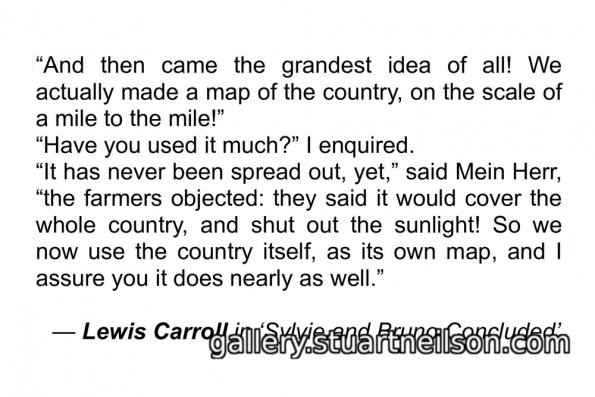Creating Autism – a four-part posting
1 History – 2 Geography – 3 Perspective – 4 Conclusions

Descriptions of autism vary between places, both globally around the world, between different languages and even between the provinces of Ireland.
An emotional tone is set by the words used, which is as real as the events reported – in comparison to Leinster, there is more anticipation and trust in Connacht; more joy and surprise in Munster; and more fear and sadness in Ulster.
Individual identity and self-worth are affected by the words and emotions other people use to respond to both the individual and to the group – autistic people – that an individual is labelled with.
_595_stuartneilson.jpg)
Word map
The word map is made from the most frequent words in news reports about autism or Asperger syndrome in Irish newspapers over the past fifteen years. The words are sized in proportion to the word frequency, and placed in the province with which they most frequently co-occur. The position within the province is random, starting from the most frequent word and continuing until the province area is filled and no further words fit.
I use Perl to massage large volumes of text – the Irish newspaper stories about autism used in the images here amount to 30 MB of text, containing 2.3 million words about autism published over the past fifteen years. Sentiment analysis estimates the emotional content of a news stories about autism, using Saif Mohammed’s NRC Word-Emotion Lexicon.
Newsworthy topics frame the portrayal of autistic people in the news. News reports in Connacht have often anticipated future results of biomedical research at NUI Galway, a centre of vibrant research into the genetic detection and treatment of autism as a disease. Where autism is perceived as a disease, it is common to read statements such as “more children currently diagnosed with autism than diabetes, AIDS, cancer, cerebral palsy, cystic fibrosis, muscular dystrophy and Down syndrome combined” (Irish Independent, 10-6-2013). In contrast, news stories in Munster often reference the High Court case that affirmed Jamie Sinnott’s right to education when reporting current issues such as school needs, rights, support dogs and other specific community resource provisions. Leinster is dominated by government decisions on education and other child-centred provision; and Ulster reflects the language of the NHS.
_595_stuartneilson.jpg)
_595_stuartneilson.jpg)
_595_stuartneilson.jpg)
Local autistic identity is a flowing amalgamation of memorable autism-related events in a locale’s social history. Autistic people themselves have the potential to modify their identity, and a small number of prominent speakers, impactful news reports and fictional film portrayals have a disproportionate impact in shaping how all autistic people are perceived.
_595_stuartneilson.jpg)
The image of autistic people is a fractured mosaic formed from often contradictory images of individual people, characters in film and news events. Autistic people have to contend with inconsistencies between personal identity and the images of autism that others perceive and portray.
_595_stuartneilson.jpg)
_595_stuartneilson.jpg)
_595_stuartneilson.jpg)
_595_stuartneilson.jpg)
_595_stuartneilson.jpg)
_595_stuartneilson.jpg)
_595_stuartneilson.jpg)
_595_stuartneilson.jpg)
_595_stuartneilson.jpg)
_595_stuartneilson.jpg)
Video montage
Video montages are made from a small number of selected frames within a video, either widely spaced or chosen because they are very different from one another. I first combined frames by calculating the darkest elements (the minimum of the selected frames) and the lightest elements (the maximum), and then overlaid these extremes with a soft light mode.
The effect, to me, is like a visual tone poem of the place, the event or the journey recorded in the video. It amazes me how much of the place, time and activity are recognizeable and how unlike the montage is to a more typical photographic record of a moment in time.
_595_stuartneilson.jpg)
_595_stuartneilson.jpg)
_595_stuartneilson.jpg)
Society reacts to and supports the ‘autism’ it perceives, which is different in different places. Our reactions to autism framed as a problem, as a disease or as a resource-intensive cost to the State are very different from our reactions to autism framed by growth, development, personal achievement or community membership. Media portrayals modify our reactions to individual autistic people and to their needs.